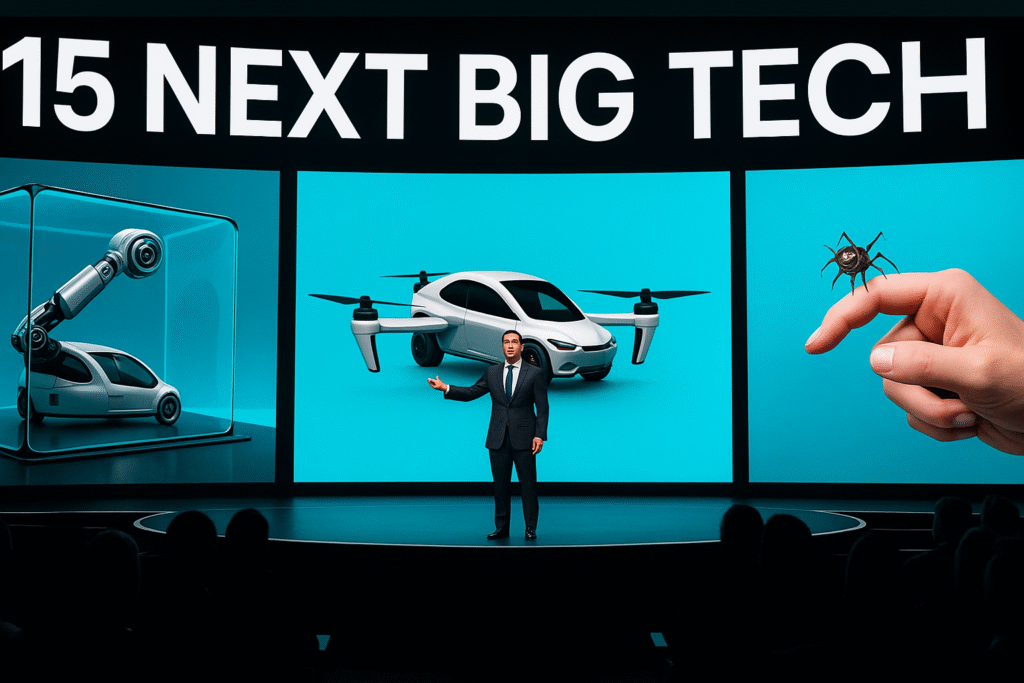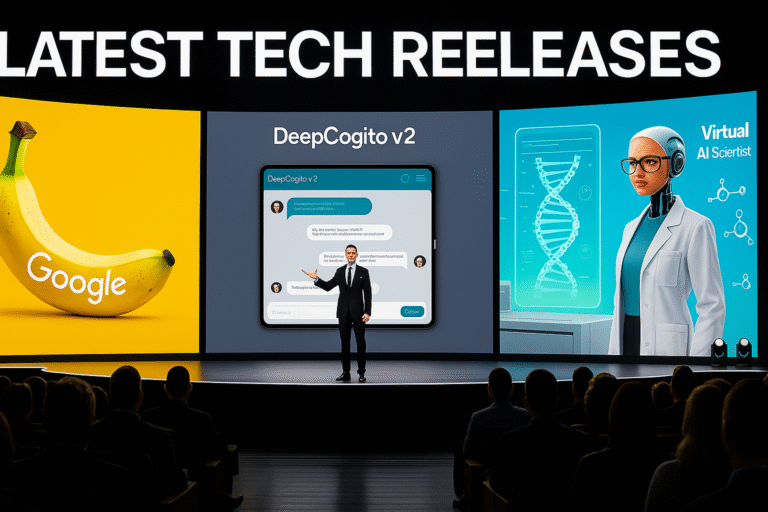
Introduction
The world doesn’t have 10–15 years to prepare for change—industries we once thought untouchable are already beginning to collapse. The rise of technology trends driving industry collapse is happening right now, not in some distant future. From AI to synthetic biology, the speed of innovation is rewriting the global economy and disrupting legacy systems at lightning pace.
Let’s explore the 15 technology trends that are reshaping industries in 2025 and beyond.
1. On-Device AI and Edge Intelligence
AI is moving closer to our daily lives. Apple’s 2024 launch of Apple Intelligence allows smaller AI models to run directly on devices like iPhones and Macs. IDC projects AI PCs will rise from 50 million units in 2024 to 167 million by 2027, making up 60% of shipments.
Industry Impact: Cloud storage and software services once built on subscription revenue may see massive declines as hardware delivers what servers used to handle.
2. Industrial Digital Twins
Companies like Siemens and Nvidia are pioneering digital twins—virtual replicas of systems and assets. Rotterdam’s port is already testing these for shipping management.
McKinsey reports digital twins can reduce maintenance costs by 15–30%. The market is projected to grow from €16 billion in 2025 to €240 billion by 2032.
Industry Collapse Threatened: Physical prototyping, inspections, and rework.
3. Tokenized Finance and On-Chain Assets
Money itself is being reprogrammed. In 2024, BlackRock launched a tokenized U.S. Treasury fund on Ethereum, which quickly reached $1.9 billion in assets.
Today, tokenized real-world assets on blockchain exceed $26.5 billion, with settlements nearly instant.
Industry Collapse Threatened: Middlemen in finance—fund administrators, transfer agents, and correspondence banks.
4. Brain-Computer Interfaces (BCI)
Neuralink’s first human trial allowed patients to move a cursor using thought alone. By 2025, ALS patients edited and narrated videos with brain signals and AI-generated voices.
Market projected at $6.2 billion by 2030.
Industry Collapse Threatened: Keyboards, rehab devices, and traditional communication tools.
5. BVLOS Drones and Autonomous Delivery
In August 2025, the FAA introduced rules for drones flying beyond visual line of sight (BVLOS). Walmart has already completed 150,000+ drone deliveries.
Analysts see drone logistics becoming a tens of billions market by 2030.
Industry Collapse Threatened: Courier services, traditional last-mile logistics, and inspection jobs.
6. Direct-to-Cell Satellites
SpaceX’s Starlink and T-Mobile launched direct-to-cell services, bypassing ground towers.
Analysts project $20 billion non-terrestrial network market by 2030.
Industry Collapse Threatened: Telecom roaming fees and rural broadband providers.
7. Synthetic Biology and Gene Editing
CRISPR-based therapies are moving mainstream, with the first FDA-approved gene therapy in 2023.
The synthetic biology market may reach $3 trillion by 2030.
Industry Collapse Threatened: Agriculture, livestock, and chronic care pharma.
8. Physical AI: Humanoids and Cobots
Robots are moving beyond cages. Tesla and Figure AI are testing humanoids in warehouses.
By 2030, humanoid robots could be worth $38 billion.
Industry Collapse Threatened: Assembly lines, logistics, and predictable service jobs.
9. Autonomous Vehicles and Flying Cars
Waymo expanded driverless taxis to Los Angeles, while Joby Aviation is pushing air taxis.
The autonomous vehicle market could hit $2.3 trillion by 2032.
Industry Collapse Threatened: Parking lots, trucking, ride-hailing, and insurance.
10. Perovskite Tandem Solar Cells
Breakthrough solar cells now reach 34.85% efficiency, surpassing silicon’s 25%.
Japan pledged $1.5 billion to boost thin-film solar.
Industry Collapse Threatened: Fossil fuel plants and high-cost utilities.
11. Self-Driving Labs and AI Drug Discovery
Autonomous labs like Polybot are already running experiments without humans.
The R&D market is worth $200 billion annually, but AI-driven automation is cutting traditional trial-and-error methods.
Industry Collapse Threatened: Research pipelines and conventional pharma processes.
12. AI vs AI Cybersecurity
The cybersecurity battlefield is becoming machine vs machine.
Cybercrime costs hit $9.5 trillion in 2024, expected to reach $10.5 trillion in 2025.
Industry Collapse Threatened: Firms relying on human analysts for alerts and slow response.
13. Post-Quantum Cryptography
Quantum computers threaten existing encryption.
Governments are already rolling out quantum-safe standards, but migration could take 5–10 years.
Industry Collapse Threatened: Current encryption vendors.
14. Fusion and AI-Powered Energy Demand
Fusion labs have achieved net energy gain, while AI data centers are doubling electricity demand by 2026.
This threatens fossil fuels’ $4 trillion industry, as abundant clean energy undercuts scarcity pricing.
15. Agentic AI and the GPT-5 Era
OpenAI’s GPT-5, launched in August 2025, outperforms human experts in planning, coding, and reasoning.
Knowledge work is a $15 trillion sector—now directly challenged.
Industry Collapse Threatened: Law, research, consulting, and software development.
❓ FAQs
1. What industries are most at risk from these technology trends?
Cloud computing, finance, healthcare, logistics, telecom, and fossil fuels face the greatest disruption.
2. Is AI the biggest driver of industry collapse?
Yes—AI underpins most of these innovations, from cybersecurity to research automation.
3. How fast will industries collapse?
Analysts suggest many industries could see disruption within 5–10 years, not decades.
4. Can companies adapt instead of collapsing?
Yes—firms that embrace digital transformation can pivot, but those resistant risk obsolescence.
5. Which trend has the biggest financial impact?
Fusion energy and agentic AI could together reshape trillions in global markets.
Conclusion
The pace of technology trends driving industry collapse is accelerating. What once seemed decades away is already unfolding. From AI-driven automation to clean fusion power, the industries that fail to adapt risk disappearing.
👉 The choice is clear: adapt, innovate, or collapse.


